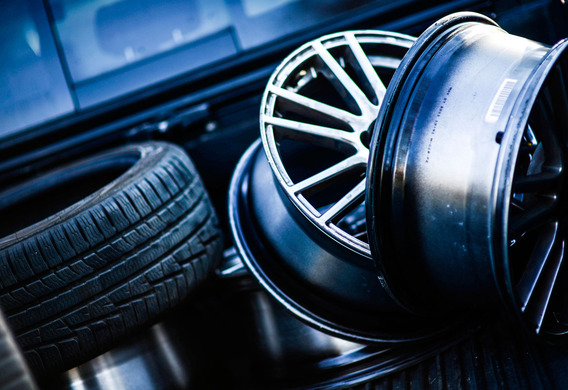
The production of lite disks began in the 1950s-1960s. They were made of light metal alloy. The lite disks have become an excellent alternative to the strain, as they are free from corrosion and weigh 20-30 percent less because of the aluminium alloy. Other materials in the composition of the alloy add a hard disk of strength. On the surface of the disks, a contact with air is formed of oxide film, which provides additional protection against adverse weather conditions and other environmental impacts.

It's a little less common for lithium alloys based on magnesium. Magnetic lime disks weigh slightly less aluminium analogues and better react to impact, but their corrosion corrosion is extremely low. Moreover, such discs are not intended for Russian roads, which are sprinkling with chlorination formations: the surface of the wheels is instantly covered by unattractive divorces.
Attempts to make licast discs from titanium alloys have not been successful. Very strong and resistant to rust, they did not, however, justify their high cost, and therefore they were not proliferated. In addition, the production of such disks involved the use of expensive equipment and the use of sophisticated technology.
The disks are released under low pressure. This guarantees high quality and improves the quality of the product. The most common aluminium alloy is the silicon. The molten metal shall be poured into the forms and the metal is cold; then the heat treatment: the molten metal is heated to between 500 and 550 ° C and then cooled quickly in the water. The next phase of the artificial "aging" disks, during which they are heated again (this time only to 150-220 C) and held for several hours in the special compartments, and then chilled in the air. The final step is the mechanical handling of the rotating surface (to provide accurate installation parameters of the disks) and the application of protective coatings.
The Lite disks look much more attractive than the statived, because casting technology allows you to experiment with design as much as you want. Designers-designers draw sketches, make special forms, into which the discs are cast.
Due to the low weight of the disks the car drives more smoothly, easier to disperse, reduced fuel consumption. The good thermal conductivity of cast discs contributes to the rapid cooling of the braking equipment. The strength allows discs of this type without problems to carry the blows from which their cloisted brethrees may be bent.
However, when a disc is hit in the pit, the disc is split and the recovery is not refundging. Another lack of these disks is a high price. Even the products of domestic production are quite expensive compared to the strains, not to mention foreign producers. The fragility of the cast of the disc raises doubts about its reliability. The whole case is in particular the internal structure of the alloy material: the metal grating on the melting is broken. To make the wall of a disc more strength, the thicker must be made. Despite this, even a small blow to the kerb at the time of the parking on the disk may cause both cracks and hidden damage that cannot be repaired. Especially the risk of vehicles with low profile rubber installed, as the disk is particularly vulnerable. So the life of the cast disks is small. In addition, they reduce the service life of the vehicle suspension: because of the low level of minability, these disks do not extingule the strikes, but hand them to the suspension.
The other minus is the disk configuration of the disk. It collects road dirt in its windows, and it is extremely difficult to remove it with a normal wash. This leads to an imbalance in the wheels of the machine, and its controllability deteriorates. In order to avoid such consequences, it is necessary to regularly carry out a careful cleaning of wheels on both sides under the strong pressure of the water. You can never predict whether or not you want to accumulate in the disk. It is best to choose models with rare rays that have a smooth surface. We also need to pay attention to the reverse of the disc-there should be no gaps and gaps.
The suitability of the lite disk is estimated in the workshop. The indicator is, first of all, the safety of its bearing parts: if the rigidity of the structure is broken, the disc cannot be repaired. The size of the bevels and the number of fragments lost are also taken into account. Recovering the cast drive after a cost deformation is comparable to its replacement, which is also not a plus.







